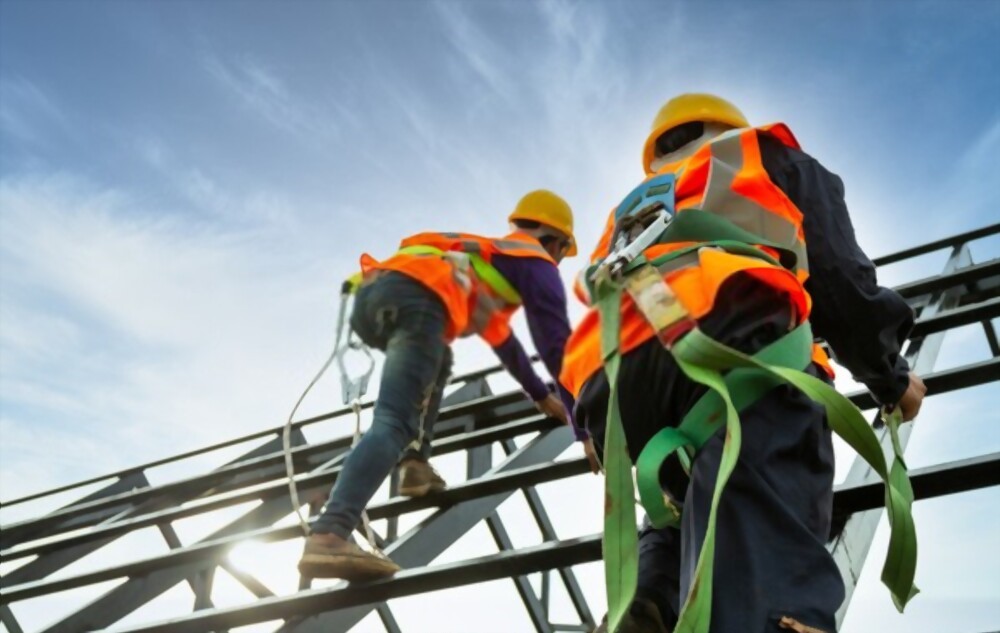Maintaining compliance with regulations for your fall protection equipment shouldn’t be seen as an expense, but rather as an investment in the security of your workers. You must have fall protection equipment at as low working heights as 4 to 8 feet if you operate in the lifting or rigging sector, construction, or any other general industry where workers are working at height.
Businesses must now give employees who are working at heights fall safety training after OSHA modified the fall protection rules in May 2017. You must have an inspection program in place to evaluate the condition of your equipment in addition to teaching your employees about fall prevention. Making sure your personal fall protection equipment is OSHA-compliant through fall protection equipment inspection.
Inspecting and making your Personal Fall Protection Equipment OSHA Compliant
Understanding the fall protection equipment inspection criteria will keep your employees safe while working at heights and keep your company compliant with regulations. It is crucial to have a designated employee who is competent and certified to check your retractable, lanyards, and harnesses and anchor points.
The easiest method to keep everyone on the job site safe is to thoroughly check your personal fall protection equipment for damage or anomalies before each usage. Remember that retractable, lanyards, and fall protection harnesses are your employees’ last line of defence in the event of an unintentional fall from a height. So, you should not compromise with the quality of your fall protection equipment.
According to industry regulations, your fall protection equipment must also be inspected at least once a year by a “competent person” who has been approved by their company to perform that particular duty. Every organization should have a designated “Competent Person” who has received training from a third party to examine the personal fall protection equipment. If you do not want to invest a huge amount to recruit a person to examine your fall protection system on-site then you can hire a third party service for fall protection equipment examination. They will inspect the equipment and give a report on your fall protection system, and you can make the necessary changes according to their advices.
After receiving training for fall protection equipment inspection, an employee’s company can declare them “Qualified” and “Competent” to conduct inspections and instruct their co-workers on how to examine and size the equipment.
They can decide when a lanyard, harness or retractable device should be taken out of service, and once they make that decision, no one else in the company can override it, not even their manager, executives, or even the CEO.

Third-party Inspection of Fall Protection Equipment
There are numerous independent businesses that can examine fall protection equipment. The advantages of hiring a third party to conduct your fall protection equipment inspection are as follows:
- Their inspectors have earned independent certification for the task at hand.
- They are an impartial party who is just concerned with the inspection process, providing solutions when needed, and finishing the work quickly to ensure you are in compliance.
- For a major cost reduction, it may be combined with other services like overhead crane inspection, below-the-hook inspection, rigging inspection etc.
- Organize the annual inspection schedule and keep the documents for compliance.
Third-party organizations that can train your team members to use the equipment correctly, examine it to spot any anomalies, and ultimately decide whether it needs to be taken out of service. The recommended procedure is to keep written inspection records for two years.
Before each eight-hour shift that it is utilized, fall protection equipment must be checked by the authorized person at least once. Timely fall protection equipment inspection can ensure that no wear or damage has occurred. A competent rescuer or person, as suitable, shall inspect fall rescue and protection equipment on a regular basis and find out the probable problems.
Conclusion
You can take a proactive approach to identifying potential hazards by working with your co-workers, spending the time to thoroughly train your staff, and assessing the condition of your lanyards, fall protection harnesses and retractable devices. Fall protection equipment inspection will allow you to control or eliminate any hazards before they have the chance to result in mishaps or injuries.

